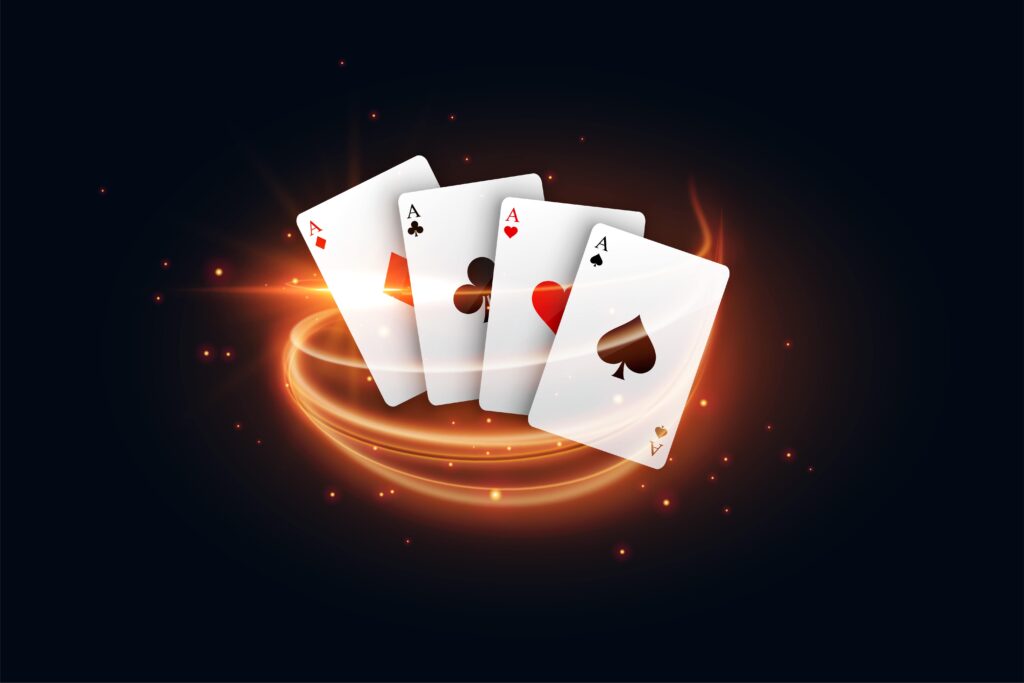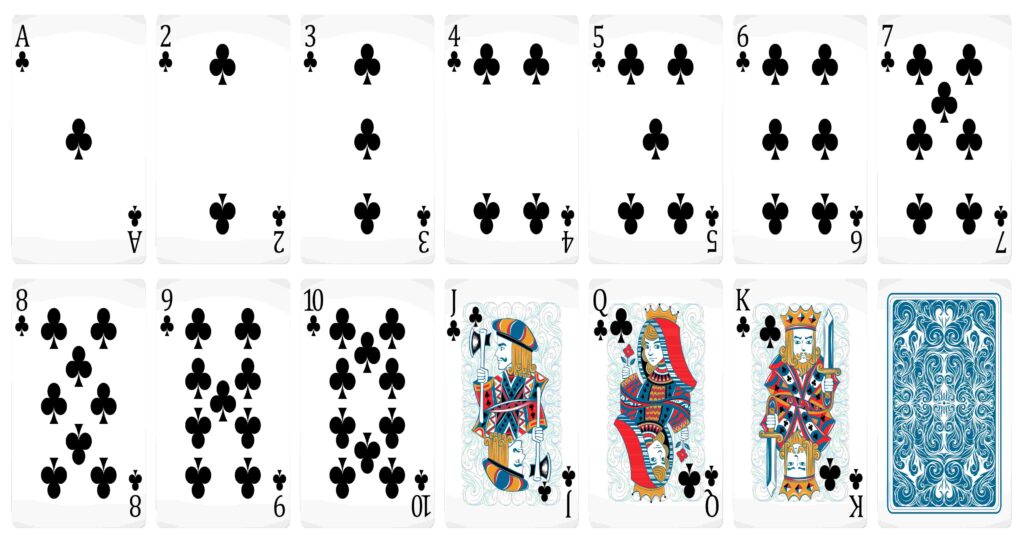
Before diving into strategy, it’s essential to understand the basics. Poker is a game of hand rankings, and your objective is to have the best five-card hand or convince your opponents to fold. The most common and popular form of poker is Texas Hold’em, so this guide will primarily focus on that variant.
Table of Contents
ToggleKey Poker Terms
- Blinds: These are forced wagers that the two players seated to the left of the dealer can choose, but only if this is done before dealing cards.
- Dealer Button: A marker that indicates the dealer’s position, shifting one spot clockwise each round.
- River, Flop, Turn: These are the names given to community card dealing’s three stages in Hold’em.
- Pot: The sum of all the money pooled together, the total of player bets accumulated, is called the pot.
- Fold, Call, Raise: Folding means giving up your hand, calling matches the current bet, and raising increases the bet.

Poker Hand Rankings (From Highest to Lowest)
- Royal Flush: A, K, Q, J, 10, all of the same suit.
- Straight Flush: Cards with the same symbol/suit, with all 5 of them in sequence.
- Four of a Kind: Cards with the same rank shared by all four.
- Full House: A pair of cards, combined with a set of three of a kind.
- Flush: Nonsequential 5 cards which all have the same symbol/suit (Diamond, Clubs, Heart, Spade)
- Straight: Five consecutive cards of different suits.
- Three of a Kind: Same-ranked cards, with a total of three in one set of Three of a Kind
- Two Pair: Two separate pairs.
- One Pair: Same-ranked cards, a pair
Poker Strategies for Beginners
1. Starting Hand Selection
Choosing the right hands to play is crucial. Beginners should be selective, especially when playing from early positions (close to the blinds). Premium hands like pocket aces (AA), kings (KK), queens (QQ), or ace-king suited (AKs) are strong openers.
- Early Position: Stick to strong hands like high pairs and AK.
- Middle Position: Widen your range slightly with hands like AQ, AJ, and lower pairs.
Late Position: Take advantage of your position by playing a broader range, including suited connectors (e.g., 7-8 suited) and lower pairs.
2. Understand Position Play
A player’s choices and decisions are heavily influenced by their gambling table seating position. Being “on the button” (the dealer) gives you the advantage of acting last after the flop, turn, and river. Before making a choice, this lets them plan more.
- Early Position: With less information available, players in this position must play safe and take it slow.
- Middle Position: Open up your range slightly.
- Late Position: As they can gather a lot of information, later players have the option of playing offensively, as well as playing more hands.
3. Master Bluffing and Semi-Bluffing
Bluffing is an essential component of poker, but it should be used sparingly and strategically. A good bluff requires an understanding of your opponents and the situation.
- Bluff when you sense weakness in your opponent.
- Semi-bluff when you have a drawing hand (like a flush or straight draw). You can win the pot outright with a bluff or hit your draw to win at showdown.
Advanced Poker Strategies
1. The Continuation Bet (C-Bet)
A continuation bet is when you raise pre-flop and then bet again on the flop, regardless of whether you’ve improved your hand. This move keeps pressure on opponents and can force them to fold weaker hands.
- When to C-Bet: On dry boards (few draws possible), where your opponent is unlikely to have hit anything.
- When to Avoid: On wet boards (many draws possible), where opponents are likely to continue if they hit.
2. Pot Odds and Expected Value
Understanding pot odds helps you decide whether to call a bet when chasing a draw. The ratio of the pot’s current size weighed against the cost of a potential call is what is known as ‘pot odds’.
- Calculate Your Outs: The cards that will improve your hand.
- Compare Pot Odds: If a player has better chances (odds) of completing their hand compared to the odds of the pot, they are better off calling.
3. Reading Opponents and Table Dynamics
Poker isn’t just about the cards; it’s about reading your opponents and understanding the table’s flow. Pay attention to betting patterns, body language, and tendencies.
- Loose Players: Tend to play many hands and bet often. Use tighter, stronger hands against them.
- Tight Players: Play fewer hands and are more cautious. You can afford to bluff more often against them.
Key Tips to Improve Your Poker Game
1. Don’t Chase Losing Hands
Many beginners make the mistake of chasing hands that have slim chances of winning. If you’re not getting the right odds to chase a draw, it’s better to fold.
2. Practice Bankroll Management
Proper bankroll management ensures that you can withstand swings in your poker journey. In general, having 20-30 buy-ins available per each stake a player wants to play is advisable.
3. Play Aggressively but Selectively
Aggressive play, when executed correctly, can pressure your opponents and build bigger pots when you have a strong hand. However, don’t confuse aggression with recklessness. Select the right spots to make your moves.
4. Avoid Tilt
Poker can be frustrating, especially after a bad beat. When a player makes bad choices because they are playing based on emotions, it’s called Tilt.
Common Mistakes to Avoid in Poker
1. Playing Too Many Hands
Playing too many hands is a mistake many newbies make. Stick to a strong starting hand strategy, especially in early positions.
2. Not Adjusting to Opponents
It’s important for players to play according to the opponent they face, and make proper adjustments for each different opponent. Don’t play the same way against tight and loose players—adapt and exploit their weaknesses.
3. Ignoring Table Position
Position is power in poker. Don’t play the same range of hands from early and late positions. Players should try to take control of the pot amount with their positional advantage, which also affects the flow of the game.
Conclusion
The best way to improve in poker is through experience—study the game, practice with low-stakes games, and gradually move up as you gain confidence. Use the tips and strategies outlined in this guide to gain a deeper understanding of the game, and remember, patience and discipline are key to becoming a successful poker player.




